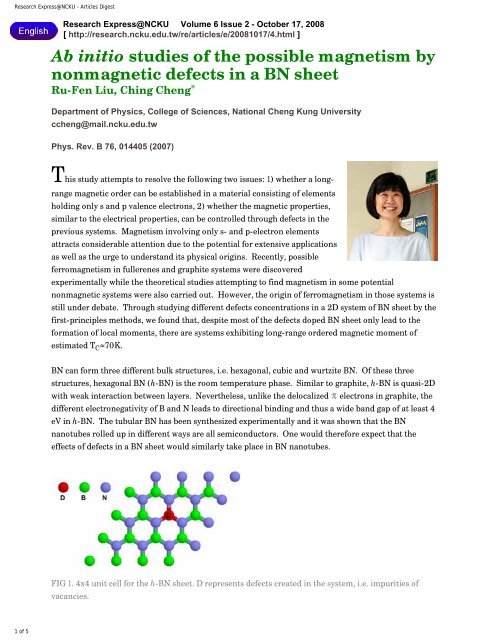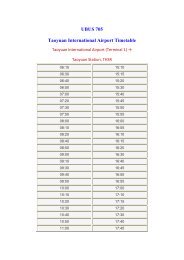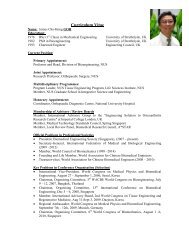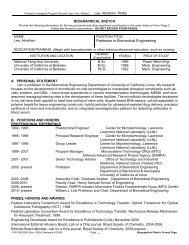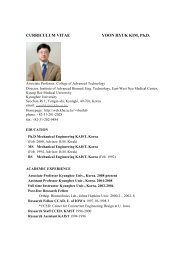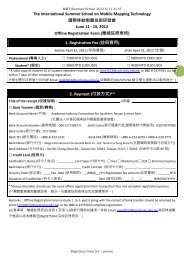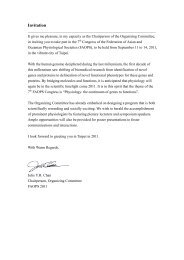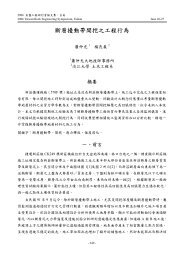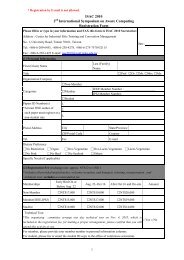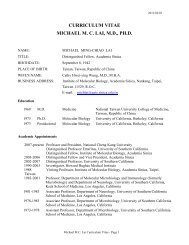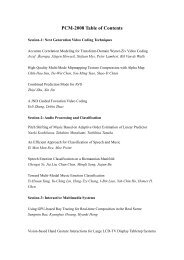Research Express@NCKU - Articles Digest
Research Express@NCKU - Articles Digest
Research Express@NCKU - Articles Digest
Create successful ePaper yourself
Turn your PDF publications into a flip-book with our unique Google optimized e-Paper software.
<strong>Research</strong> <strong>Express@NCKU</strong> - <strong>Articles</strong> <strong>Digest</strong><strong>Research</strong> <strong>Express@NCKU</strong> Volume 6 Issue 2 - October 17, 2008[ http://research.ncku.edu.tw/re/articles/e/20081017/4.html ]Ab initio studies of the possible magnetism bynonmagnetic defects in a BN sheetRu-Fen Liu, Ching Cheng *Department of Physics, College of Sciences, National Cheng Kung Universityccheng@mail.ncku.edu.twPhys. Rev. B 76, 014405 (2007)This study attempts to resolve the following two issues: 1) whether a longrangemagnetic order can be established in a material consisting of elementsholding only s and p valence electrons, 2) whether the magnetic properties,similar to the electrical properties, can be controlled through defects in theprevious systems. Magnetism involving only s- and p-electron elementsattracts considerable attention due to the potential for extensive applicationsas well as the urge to understand its physical origins. Recently, possibleferromagnetism in fullerenes and graphite systems were discoveredexperimentally while the theoretical studies attempting to find magnetism in some potentialnonmagnetic systems were also carried out. However, the origin of ferromagnetism in those systems isstill under debate. Through studying different defects concentrations in a 2D system of BN sheet by thefirst-principles methods, we found that, despite most of the defects doped BN sheet only lead to theformation of local moments, there are systems exhibiting long-range ordered magnetic moment ofestimated T C ≈70K.BN can form three different bulk structures, i.e. hexagonal, cubic and wurtzite BN. Of these threestructures, hexagonal BN (h-BN) is the room temperature phase. Similar to graphite, h-BN is quasi-2Dwith weak interaction between layers. Nevertheless, unlike the delocalized electrons in graphite, thedifferent electronegativity of B and N leads to directional binding and thus a wide band gap of at least 4eV in h-BN. The tubular BN has been synthesized experimentally and it was shown that the BNnanotubes rolled up in different ways are all semiconductors. One would therefore expect that theeffects of defects in a BN sheet would similarly take place in BN nanotubes.FIG 1. 4x4 unit cell for the h-BN sheet. D represents defects created in the system, i.e. impurities ofvacancies.1 of 5


